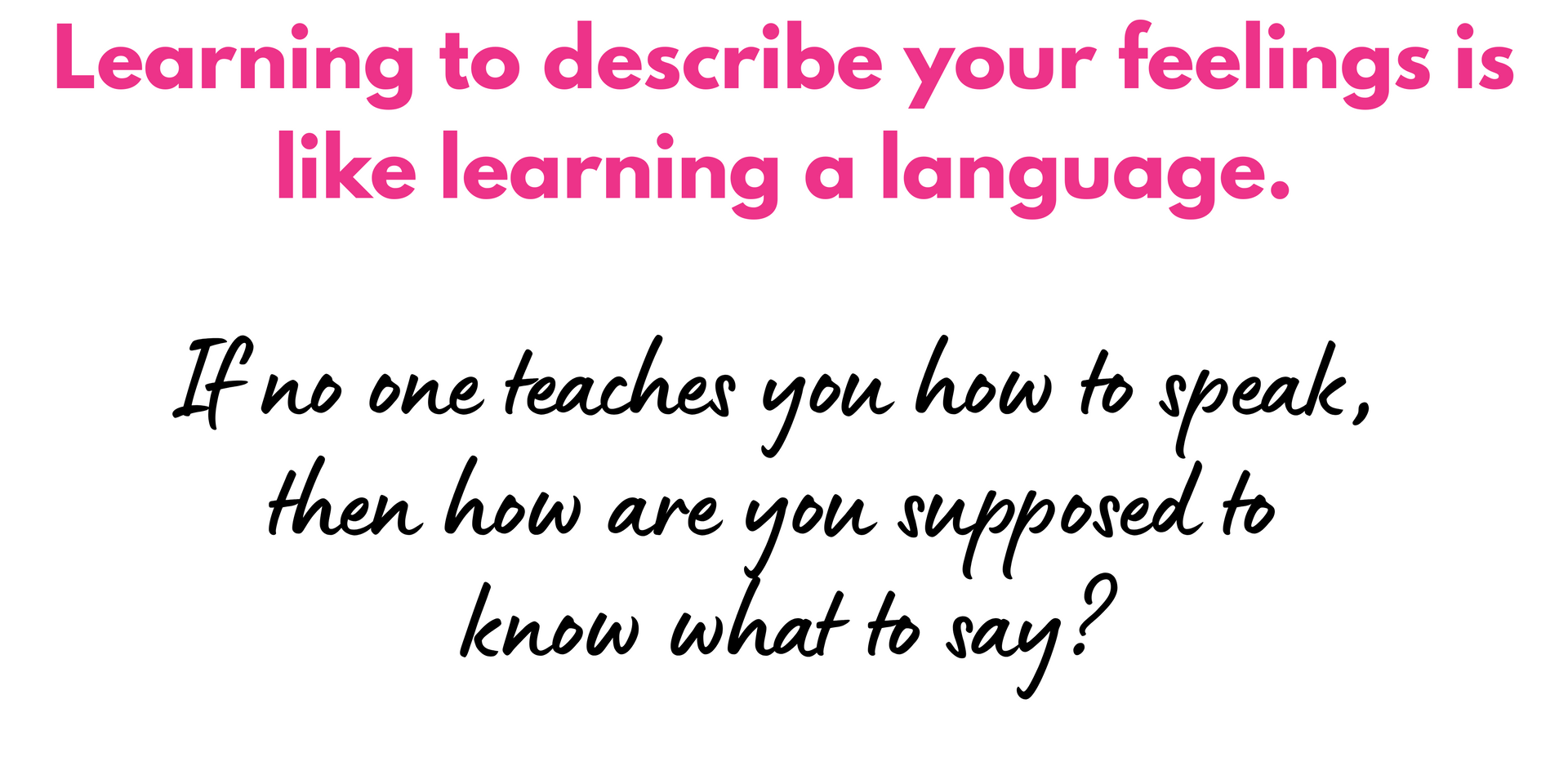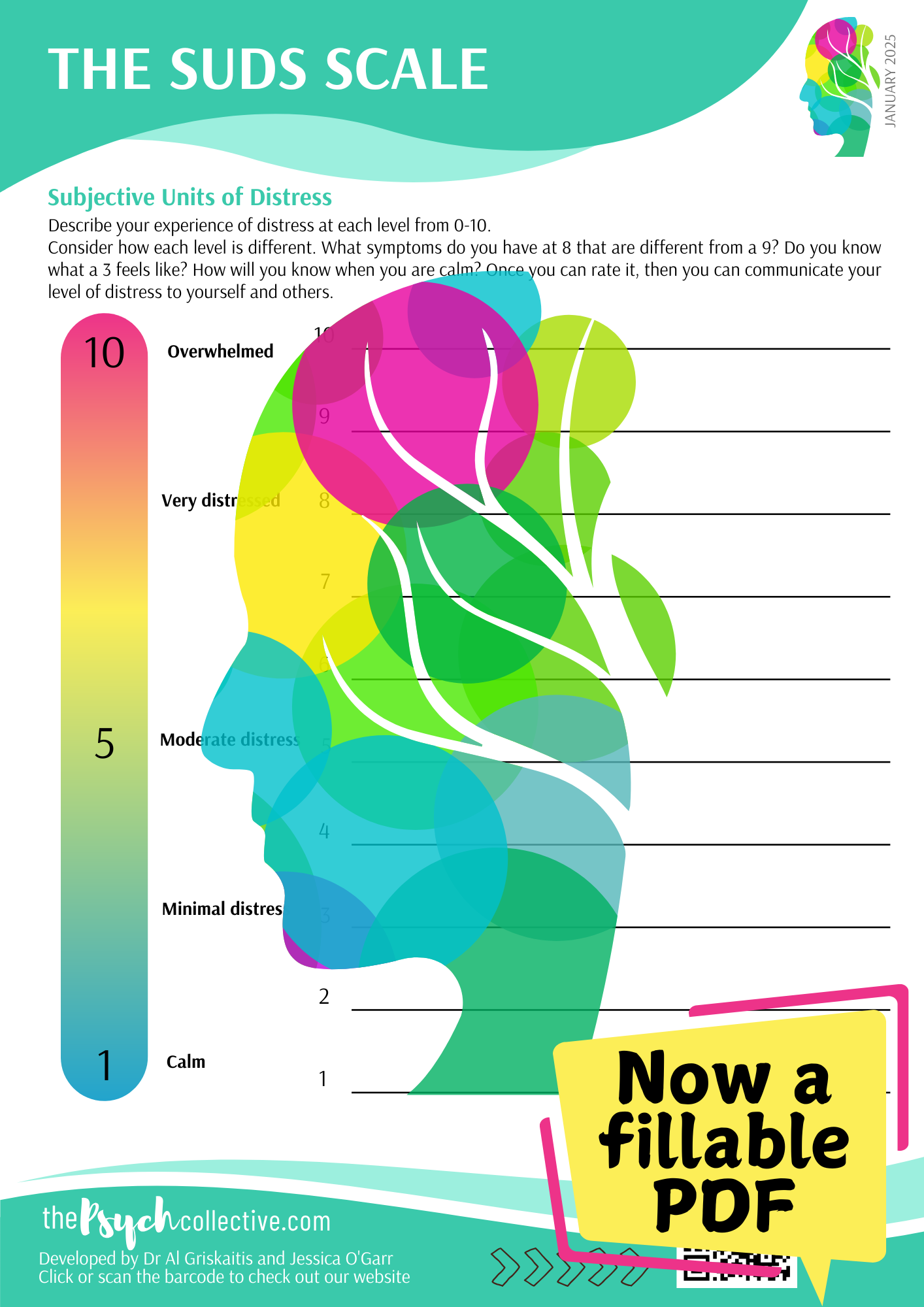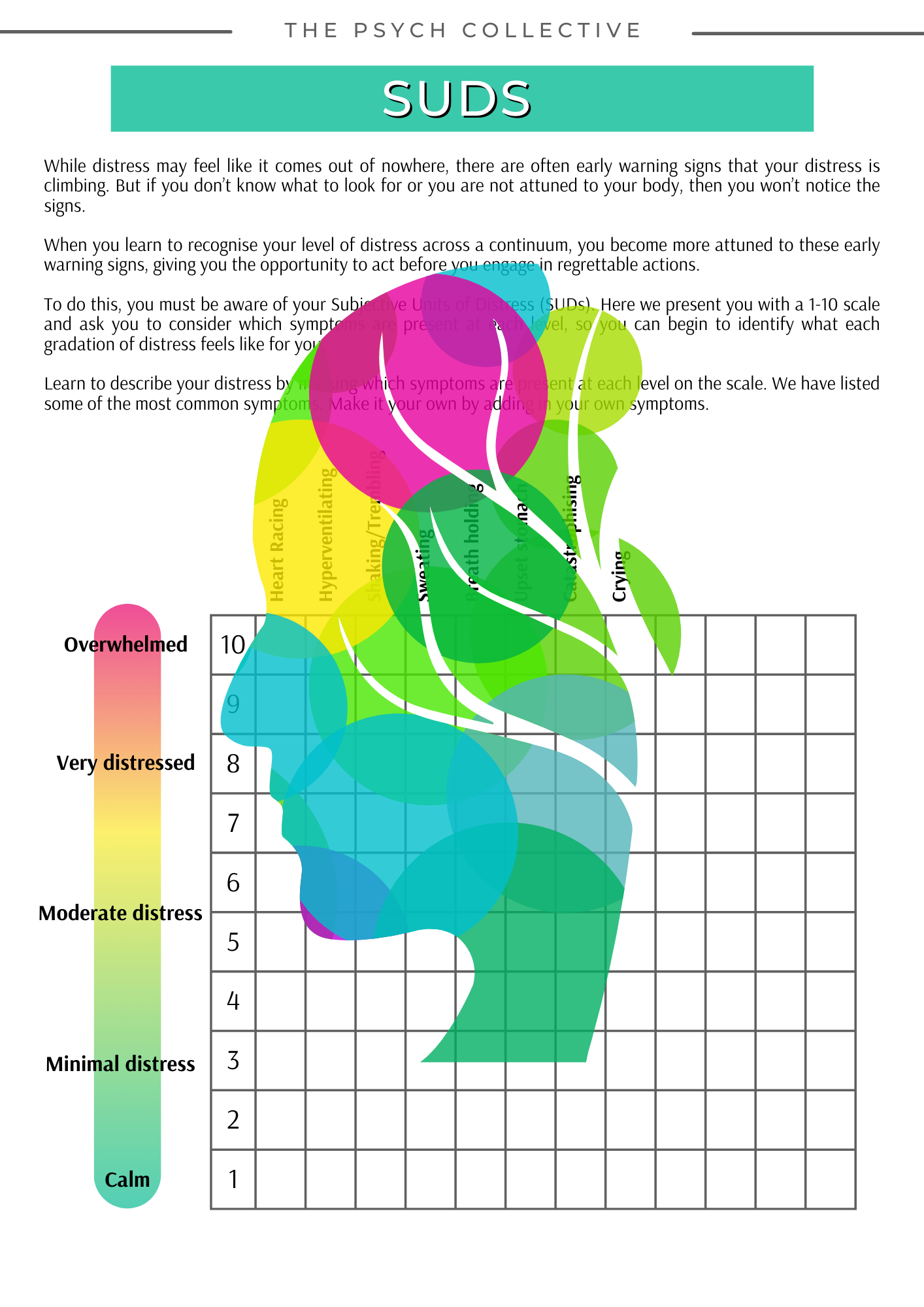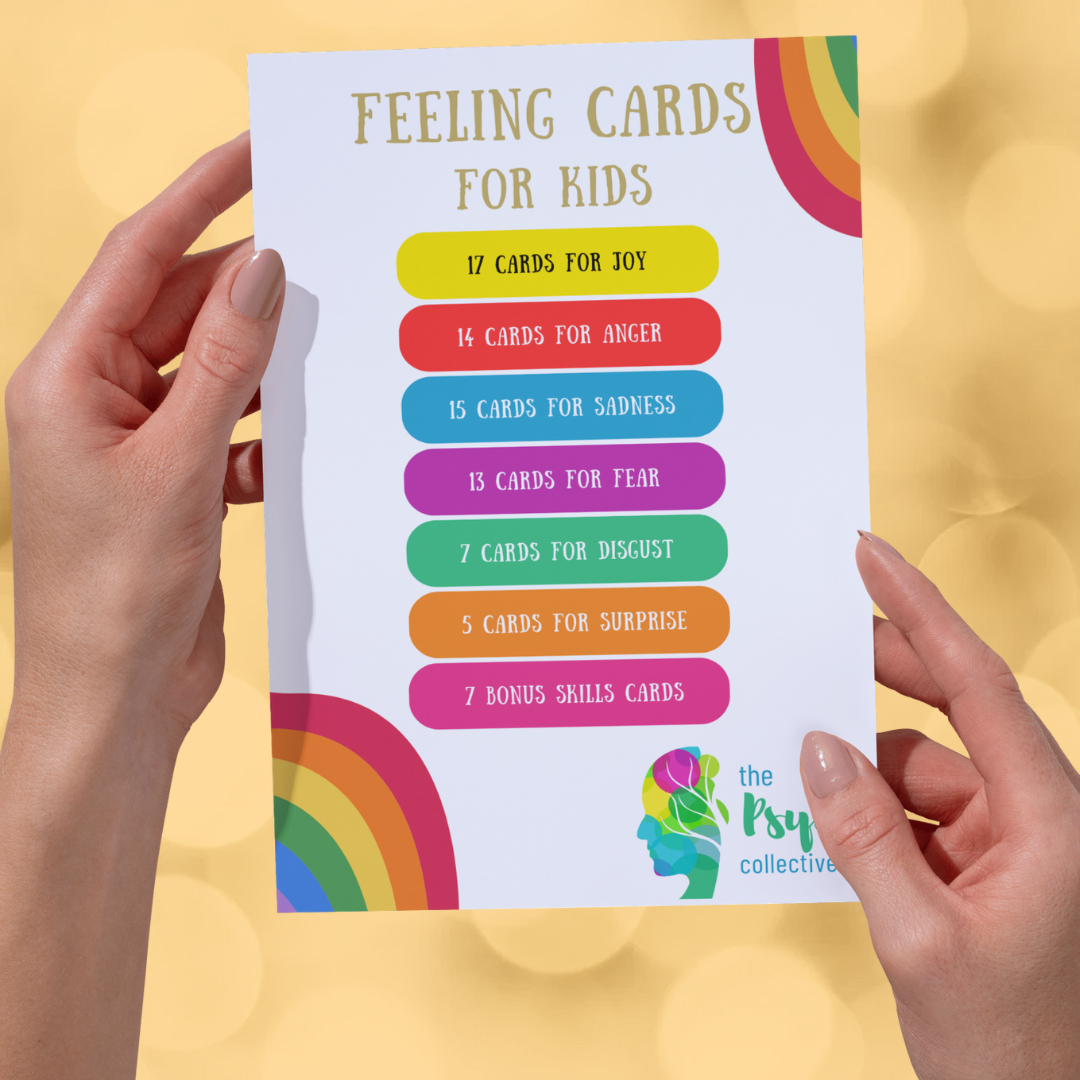What are Subjective Units of Distress?
Understanding the Subjective Units of Distress (SUDs) Scale
What It Is, How to Use It, and Why It’s Sometimes Hard
By Jess O'Garr, Clinical Psychologist
What are Subjective Units of Distress?
This is a concept that comes up constantly in clinical practice — we talk about it daily with almost every patient. It’s about how you measure or rate your distress, and we do this using something called the Subjective Units of Distress Scale, or SUDs.
So what are SUDs? It’s basically a way of asking "How distressed are you, out of 10?"
Some people use a 1 to 100 scale, but it’s essentially the same.
We find this scale incredibly helpful. It not only allows patients to communicate more clearly with me, but it also gives them a language to explain how they’re feeling to friends and family — especially in those moments of high distress.
How to Use the SUDs Scale to Rate Your Distress
We typically ask, “Where are your SUDs at?” It’s a simple way of checking in on how intense your level of distress is. You might be surprised — someone might look okay on the outside, but when asked, they’ll say they’re a 10 out of 10. Others might appear quite distressed but rate themselves as a five. That’s the whole point — it’s subjective. It’s about your personal rating of your internal experience.
Nobody else gets to decide what your SUDs are. You might appear calm on the outside — like a swan, smooth on the surface, but paddling furiously underneath. Some people are good at masking how they feel, which means others may not pick up on their actual level of distress. So even if someone looks calm, if they say they’re an eight, then that’s what we go with.
That said, not everyone will be able to correct rate their SUDs because they don’t have the internal awareness or language to describe their subjective experience.
Part of a clinician’s role is helping people learn to rate their SUDs more accurately. We aren’t here to tell you how to are feeling, but we are here to help you express how you are feeling so you can communicate more effectively.
Why Do Some People Struggle to Describe Their SUDs?
1. Lack of Emotional Vocabulary (Alexithymia)
A lot of people rate their distress as either a zero or a ten — either completely fine or completely freaking out. They lack the in-between gradations. This is often linked to a condition called alexithymia.
Alexithymia literally means “no words for mood”. It comes from:
- Lexi, meaning lexicon (or vocabulary)
- Thymia, meaning temper or mood
- And the prefix a, meaning absence or lack

So people with alexithymia experience emotions, but don’t have the words to describe them. They might say things like “I’m fine,” “I’m bad,” or “I’m pissed off,” but they struggle to express the nuance of how they’re feeling.
It’s much more common than many people think. Often, individuals were raised in environments where emotions weren’t discussed, or they were punished for expressing feelings. If parents themselves didn’t have the emotional vocabulary, how could the child possibly learn it?

2. Dissociation from Emotions Due to Trauma
Another common reason people struggle with rating distress is dissociation, especially in individuals with a trauma history.
Dissociation can affect your connection to yourself and your surroundings. For example, survivors of childhood trauma may have learned to “go inside themselves” to escape danger, disconnecting from their emotions as a protective response.
As adults, this becomes a default coping strategy. When asked “Where are your SUDs at?”, someone in a dissociative state may simply say “I don’t know” or give a blank stare. They’ve shut off from their internal world, so they’re unable to report what’s happening inside.
In therapy, we help these individuals reconnect with their body and internal experience — gently and in small steps, in a safe environment. That way, over time, they become better able to give a meaningful SUDs rating.
3. Messages from Childhood and Social Conditioning
If someone was raised in an environment where they were told things like, “Stop crying or I’ll give you something to cry about,” they may have learned that expressing emotion is dangerous. That person might tend to under-report their distress later in life.
For instance, a child falls and scrapes their knee, starts crying, and the parent says, “It wasn’t that bad. Don’t be such a sook.” The child is then getting the message: “My feelings are wrong.” So they start distrusting their own emotional instincts.
4. Occupational Training
The same is often true for people trained in high-pressure roles — like the military or police. These environments may actively train people to suppress emotional responses. So even if someone is distressed, they’ve been conditioned to ignore or override it — making it harder to report SUDs accurately.
Tips for Practising Your SUDs Ratings
If you’re new to SUDs or you’re someone who finds it difficult, a simple starting exercise is to:
- Set an alarm on your phone three times a day.
- When the alarm goes off, pause for a moment and ask:
Where are my SUDs at right now?
- Try to give a number, even if it’s rough. Start with broader strokes like 1, 3, 5, 7, 10 if finer details feel too hard.
It’s important to practise this not only when you’re highly distressed. Building awareness of your emotional state before things get intense helps you to catch the build-up — and potentially avoid a crisis.
Every episode of distress has a build-up, a peak, and a crash. Most people only notice the peak — the “freak-out” moment — and miss the earlier signs. So the goal is to help you spot the signs sooner, and then intervene more effectively.
How Do I figure out my SUDs?
Write it Down!
We offer two different worksheets for people who want to practise rating their distress.
The first option is a simple scale that asks you to write down each symptom that is present at each level of distress. For this, you need to be able to ask yourself “What symptoms do I experience at 9 that makes it different from 8?
This can be tricky, and often my patients will leave 1-3 blank because these lower levels are very unfamiliar.

The second option is included in our Distress Skills patient workbook.
Rather than writing a list yourself, we include a matrix for you to tick off which symptom you experience at each level of distress, and by accumulating ticks you will reveal which symptoms are present at each level.
This is often much easier for people who struggle to describe their SUDs.

Still need more?
Jess and Dr Al give a comprehensive overview of the SUDs scale, factors that make it harder to rate, how neuroticism and sensitivity play a part and advice on which skills to use in Lesson Two: Rating your Distress from their online course Surviving Distress.
Sign up today to access your free lessons from this online course for Distress.
Share
Categories
About Our Resources
We offer actionable resources and teach real skills to help people make meaningful change in managing mental health issues through different modes depending on people's learning preferences including infographics, text, worksheets, handouts and video.












